Weighted blankets have gained popularity in recent years as a tool for relaxation and sleep improvement. These special blankets are filled with materials like glass beads or plastic pellets to make them heavier than regular blankets. Weighted blankets typically range from 15 to 25 pounds and are designed to provide gentle pressure across the body.
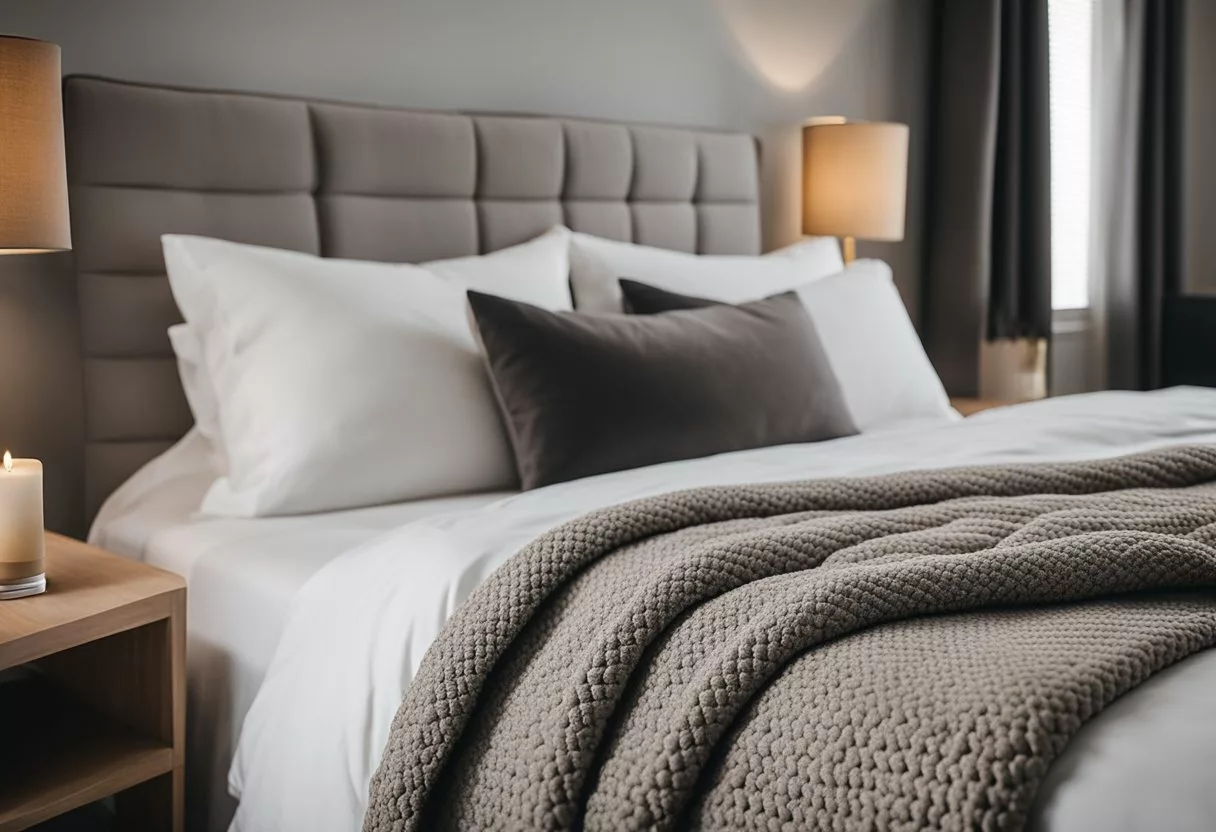
The extra weight of these blankets is meant to create a calming effect. This is based on the idea of deep pressure stimulation, which some believe can help reduce anxiety and promote better sleep. Many people find the added weight comforting, like a firm hug or swaddling.
Weighted blankets come in different sizes, weights, and materials to suit various preferences. Some are made with cooling fabrics for hot sleepers, while others have plush covers for extra coziness. The growing market offers options for adults, children, and even pets.
Key Takeaways
- Weighted blankets provide gentle pressure that may help with relaxation and sleep
- They come in various weights, sizes, and materials to suit different needs
- Some potential benefits include reduced anxiety and improved sleep quality
Understanding Weighted Blankets
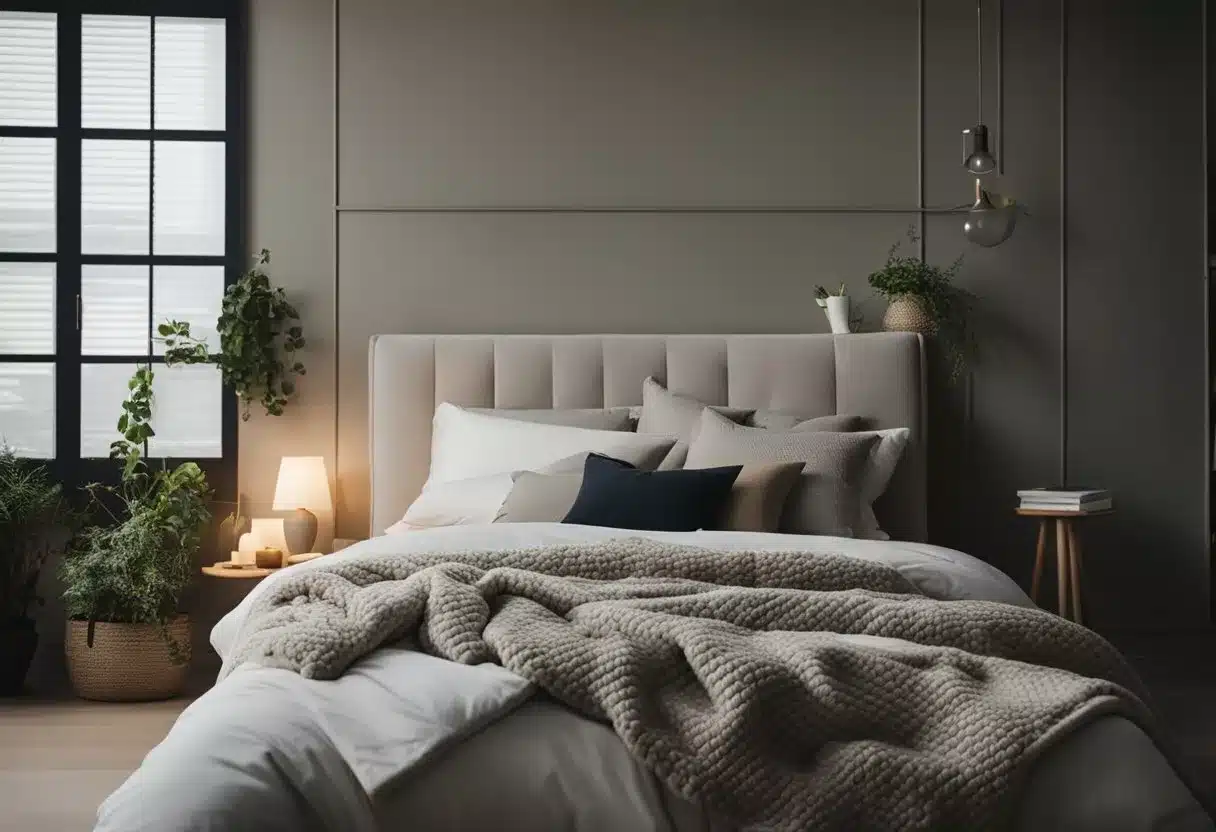
Weighted blankets are unique bedding items designed to provide gentle pressure across the body. They come in various sizes, weights, and materials to suit different needs and preferences.
History and Composition
Weighted blankets were first used in the 1990s as therapy tools for people with sensory disorders. They quickly gained popularity for their calming effects. These blankets have two main parts: an outer cover and an inner weighted layer.
The outer cover is often made of soft, breathable fabrics like cotton, fleece, or chenille. Some covers are removable for easy washing.
The inner layer contains the weight. It’s typically filled with small objects to add heft while allowing the blanket to conform to the body’s shape.
Types of Fillings
Weighted blankets use different materials to create their signature heaviness. Common fillings include:
- Glass beads: Small, smooth, and dense
- Plastic poly pellets: Larger and lighter than glass beads
- Steel shot beads: Heavier but less common
- Sand: Not often used due to clumping issues
Glass beads are a popular choice because they’re small and provide even weight distribution. They’re also quiet when the blanket moves.
How Weight Is Distributed
Even weight distribution is key for weighted blankets to work effectively. Most blankets use a grid-like system of small pockets or chambers.
Each pocket holds a portion of the filling. This design keeps the weight spread out and prevents it from shifting to one side.
The total weight of the blanket varies. Most weigh between 5 and 30 pounds. The right weight depends on the user’s body weight and personal comfort.
Some blankets have extra layers of padding between the weighted inner layer and the cover. This helps soften the feel of the beads or pellets against the body.
Health and Wellness Benefits
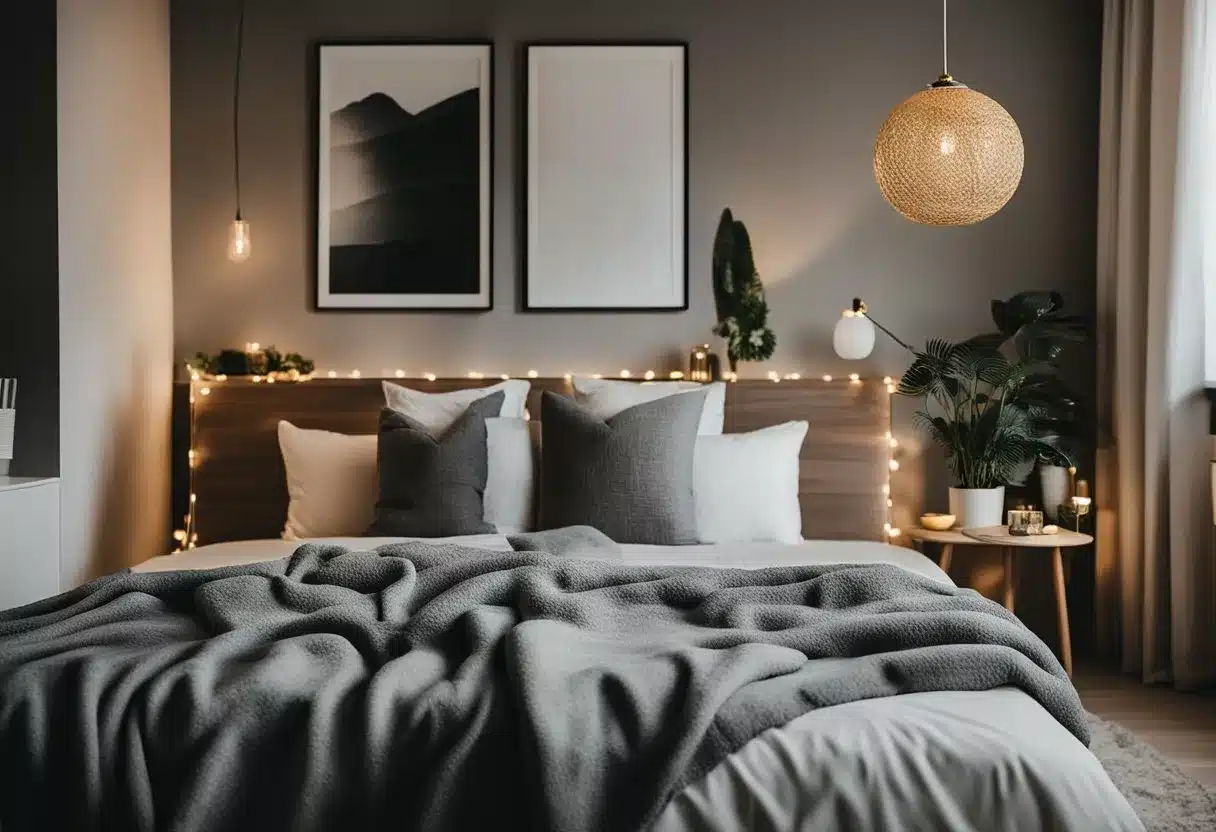
Weighted blankets offer several potential health benefits. They may help with sleep problems, reduce stress, and aid certain medical conditions.
Improving Sleep Disorders
Weighted blankets can improve sleep quality for many people. The deep pressure they provide may increase serotonin, a hormone that helps regulate sleep. This can be helpful for those with insomnia.
People who use weighted blankets often report:
- Falling asleep faster
- Fewer nighttime wake-ups
- Feeling more rested in the morning
The extra weight may also reduce tossing and turning at night. This leads to more restful sleep.
Reducing Stress and Anxiety
The pressure from weighted blankets can have a calming effect. This may help reduce anxiety and stress levels.
Weighted blankets work similarly to deep pressure therapy. They may:
- Lower heart rate
- Slow breathing
- Decrease cortisol (stress hormone) levels
Many users feel more relaxed when using a weighted blanket. This can be helpful for managing daily stress or anxiety disorders.
Aiding Specific Conditions
Weighted blankets may benefit people with certain health issues. Studies have shown positive results for conditions like:
- Autism: The pressure can have a calming effect
- ADHD: May improve focus and reduce restlessness
- Chronic pain: Can provide comfort and pain relief
- PTSD: Might help manage symptoms and improve sleep
The blankets may also help with depression and overall mental health. They can create a sense of security and comfort.
While more research is needed, many people find weighted blankets helpful for managing various health concerns.
Choosing the Right Weighted Blanket
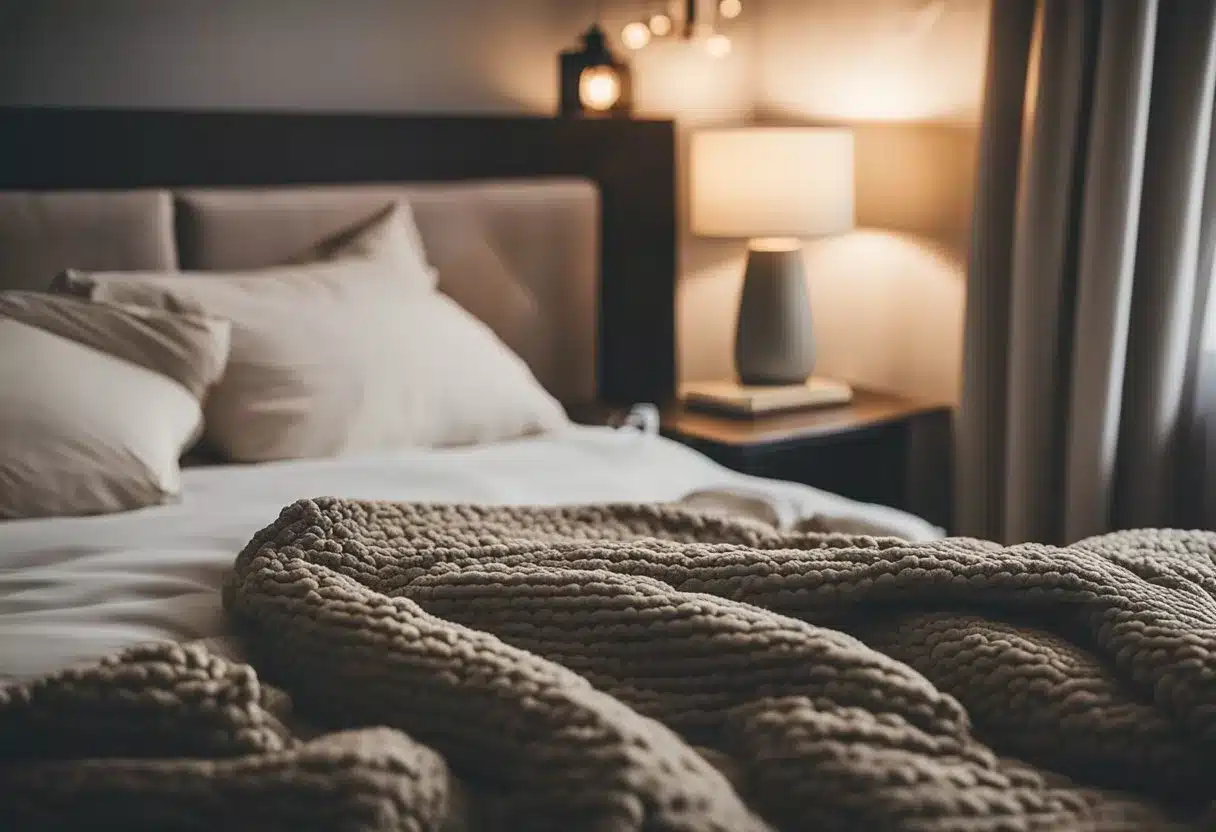
Picking the perfect weighted blanket involves considering your body weight, safety factors, and desired features. These elements help ensure you get the most benefit and comfort from your blanket.
Matching the Blanket to Your Body Weight
The ideal weighted blanket weight is about 10% of your body weight. This guideline helps create the right amount of pressure without being too heavy. For example, a 150-pound person might choose a 15-pound blanket.
Some people prefer weights between 5% and 12% of their body weight. It’s important to select a weight that feels cozy and safe.
Blanket sizes vary too. A twin size often works well for one person. Couples may want a larger size to share.
Safety Considerations
Weighted blankets are not safe for everyone. Young children and babies should not use them due to suffocation risk.
People with certain health issues should talk to a doctor before using a weighted blanket. This includes those with breathing problems, circulation issues, or claustrophobia.
It’s crucial to be able to remove the blanket easily. Users should be strong enough to lift the blanket off themselves without help.
Additional Features to Consider
Material choice affects comfort and temperature regulation. Cotton covers feel cool, while fleece or minky fabrics add warmth.
Some blankets have removable covers for easy washing. Others are machine-washable as a whole unit.
Filling materials vary, including glass beads, plastic pellets, or steel shot. Each option has a different feel and weight distribution.
Look for even weight distribution to avoid shifting. Some blankets have interior ties or baffled stitching to keep the filling in place.
Consider noise level if you’re a light sleeper. Glass beads tend to be quieter than plastic pellets.
Comfort and Maintenance

Weighted blankets offer unique comfort features but require special care. The right fabric, proper cleaning, and temperature control are key for getting the most out of these blankets.
Fabric Types and Breathability
Weighted blankets come in different fabrics. Cotton is a popular choice for its breathability. It helps keep users cool and comfortable.
Organic cotton options are available for those with skin sensitivities. These are often hypoallergenic and gentle on the skin.
Some blankets use synthetic materials like polyester. These can be less breathable but are often more durable and easier to clean.
Minky fabrics offer a soft, plush feel. They’re cozy but may trap more heat.
Cleaning and Care
Many weighted blankets have removable, machine-washable covers. This makes cleaning easier and extends the life of the blanket.
For blankets without removable covers, spot cleaning is often recommended. Some can be machine washed, but it’s important to check the care label first.
Drying can be tricky due to the weight. Air drying is often best to maintain the blanket’s shape and filling.
Regular washing helps keep the blanket hygienic. It’s especially important for those with allergies or sensitive skin.
Thermal Comfort and Cooling Options
Weighted blankets can trap heat. This is great for cold nights but can be uncomfortable in warmer weather.
Cooling weighted blankets are available. These use special fabrics or designs to help regulate temperature.
Some blankets have moisture-wicking properties. This helps keep sleepers dry and comfortable.
For year-round use, consider a blanket with different fabric options for each side. One side can be cooling, the other warming.
Heat retention can be managed by adjusting room temperature or using a fan. Some users pair their weighted blanket with cooling sheets for better comfort.
The Market for Weighted Blankets

Weighted blankets have gained popularity as a sleep aid and stress-reliever. Many brands offer different styles, weights, and features to meet consumer needs. Quality and price vary widely in this growing market.
Comparing Top Brands and Models
Gravity Blankets are a well-known option, offering both standard and cooling versions. The Luna Blanket line includes various materials like cotton and bamboo. YNM and Mosaic also produce popular models.
Baloo makes eco-friendly weighted blankets. The Layla blanket is reversible, with different textures on each side. Brooklinen offers a weighted throw option for those wanting a smaller size.
Some standout features include:
- Cooling fabrics for hot sleepers
- Machine-washable covers
- Varied weight options
- Different sizes, from throws to king
Criteria for a Quality Weighted Blanket
Weight distribution is crucial for comfort and effectiveness. Good weighted blankets have even filling throughout. Durability matters too – sturdy stitching prevents beads from leaking out.
Materials impact the blanket’s feel and temperature regulation. Cotton is breathable, while bamboo can be cooling. Some prefer minky fabric for extra softness.
Safety is key. Non-toxic glass beads are a common filling. Plastic pellets are another option. The cover should be securely attached to the weighted insert.
Price doesn’t always indicate quality. Many affordable weighted blankets perform well. Higher-end options may have premium materials or special features.
Consumer Considerations in Purchasing
Weight is a major factor. Most adults choose blankets that are 10% of their body weight. Couples sharing a blanket may need to compromise on weight.
Size matters too. Smaller throws work for napping or couch use. Larger blankets cover the whole bed.
Ease of cleaning is important. Some blankets are fully machine-washable. Others have removable, washable covers.
Temperature regulation can be a concern. Cooling options exist for hot sleepers. Those who get cold easily might prefer warmer materials.
Budget is another factor. Prices range from under $100 to over $300. Sales and discounts can make pricier options more affordable.
Special Considerations and Limitations
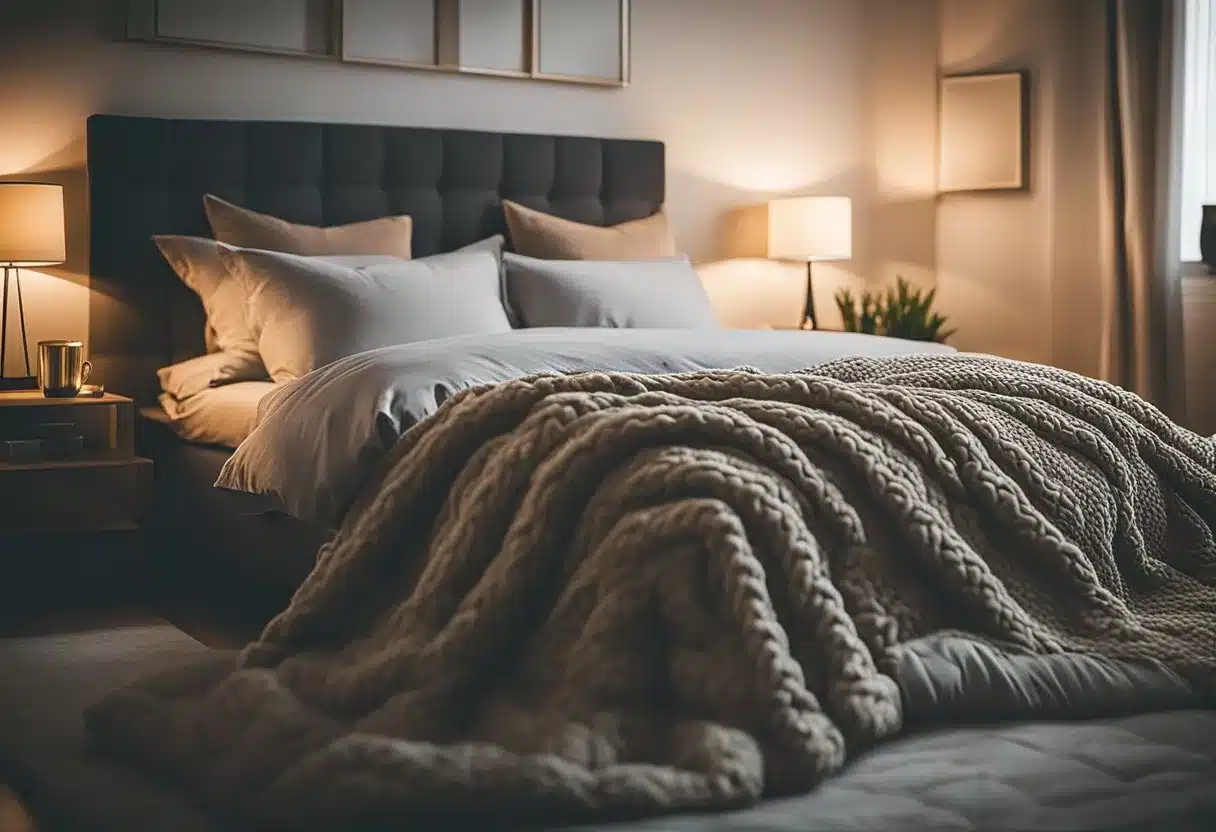
Weighted blankets offer benefits but have some risks and limitations. It’s crucial to understand these factors and seek professional advice when needed.
Possible Risks and How to Mitigate Them
Weighted blankets can pose risks for certain people. Those with claustrophobia may feel uncomfortable under the added weight. People with asthma or obstructive sleep apnea should be cautious, as the extra pressure might affect breathing.
To reduce risks:
- Start with a lighter blanket
- Use for short periods initially
- Ensure proper weight distribution
For those with osteoarthritis, the blanket’s weight may cause discomfort. A gentler weight or alternative sleep products may be better options.
Children and elderly individuals need special care. Always follow manufacturer guidelines for age and weight recommendations.
Seeking Professional Advice
Before using a weighted blanket, consulting a healthcare provider is wise, especially for those with medical conditions. A doctor can assess if a weighted blanket is safe and suitable.
People with autism spectrum disorders may benefit from weighted blankets, but should get professional guidance first. A certified sleep science coach can offer personalized advice on using weighted blankets to promote relaxation and improve sleep quality.
When purchasing, look for a good return policy. This allows testing the blanket’s comfort and effectiveness without long-term commitment.
Frequently Asked Questions
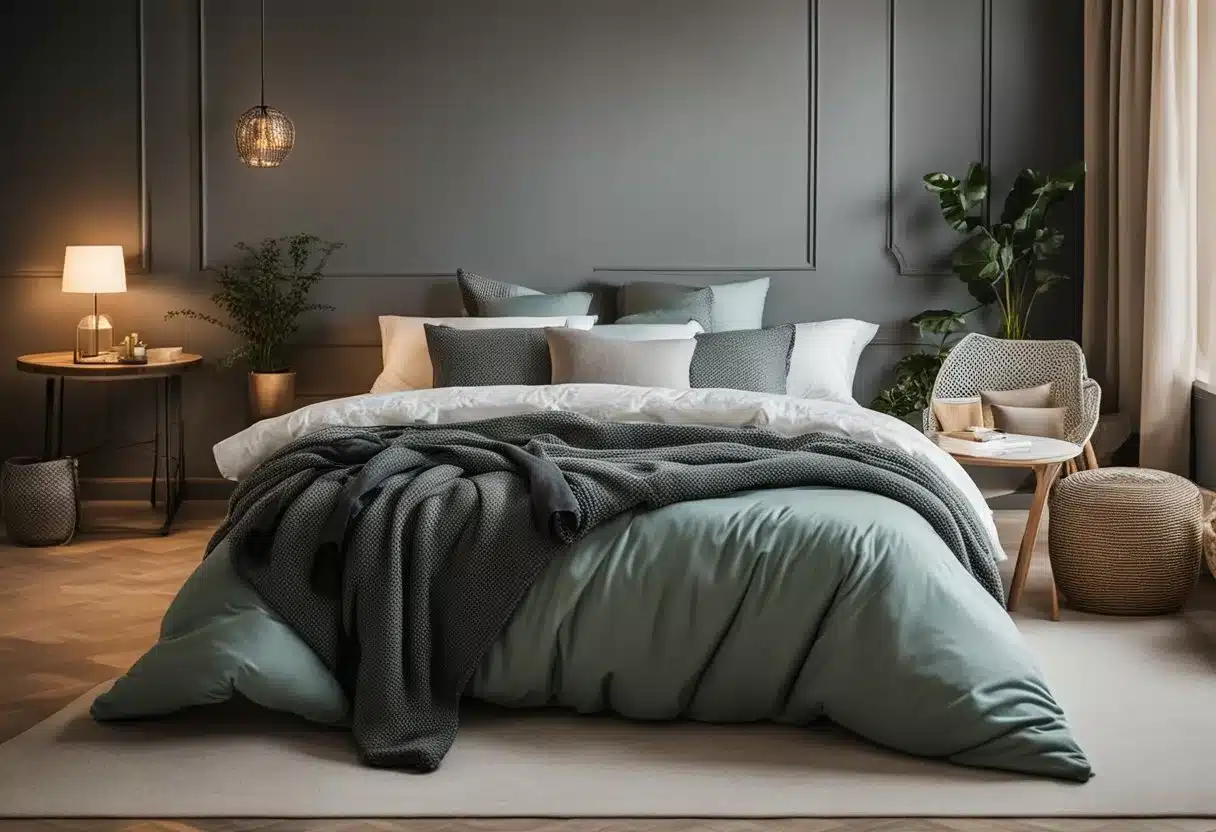
Weighted blankets serve multiple purposes and can affect sleep and anxiety. They come in different materials and have both benefits and potential drawbacks. Some people may need to avoid using them.
What purposes do weighted blankets serve?
Weighted blankets provide deep pressure stimulation. This feels like a firm hug or swaddle. The pressure may help calm the nervous system and promote relaxation.
They aim to reduce stress and anxiety. Some people use them to improve sleep quality. Others find them soothing for conditions like autism or ADHD.
Can weighted blankets improve sleep quality?
Many users report better sleep with weighted blankets. The pressure may increase serotonin and melatonin production. These hormones help regulate sleep cycles.
The blankets can reduce tossing and turning at night. This leads to less interrupted sleep. Some people fall asleep faster when using a weighted blanket.
What are the potential benefits and drawbacks of using a weighted blanket?
Benefits may include reduced anxiety and better sleep. Some users feel calmer and more relaxed. The blankets can provide comfort and a sense of security.
Drawbacks may involve feeling too warm. The weight can be uncomfortable for some people. Weighted blankets are often more expensive than regular blankets.
Who are advised to avoid using weighted blankets?
People with certain health conditions should avoid weighted blankets. This includes those with breathing problems, circulation issues, or claustrophobia.
Young children and infants should not use adult weighted blankets. Pets should also not sleep under these blankets due to suffocation risks.
How do weighted blankets assist in managing anxiety?
The deep pressure from weighted blankets may trigger a calming response in the body. This can reduce cortisol levels, which is a stress hormone.
The pressure mimics a comforting hug. This can help people feel more secure and relaxed. Some find it easier to manage anxiety symptoms with a weighted blanket.
What materials are commonly used in the manufacture of weighted blankets?
The outer layer often uses soft fabrics like cotton, flannel, or minky material. These provide comfort against the skin.
Inside, plastic pellets or glass beads create the weight. Some blankets use steel shot beads or organic materials like rice. The filling is usually sewn into small pockets to distribute the weight evenly.